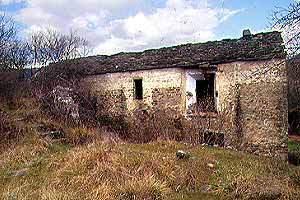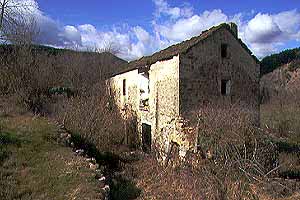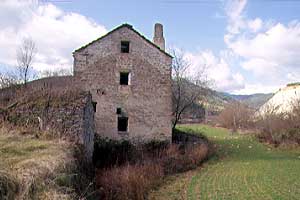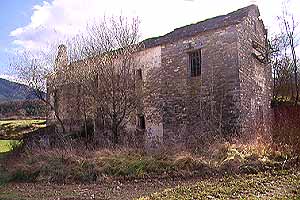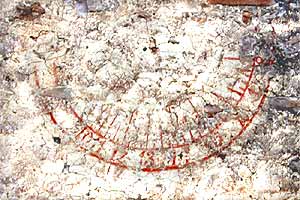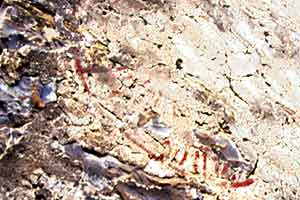Path: Introduction -
Visit the mills; catalogue - Jánovas

Mills in Altoaragón - harinero, central eléctrica
Jánovas

Jánovas is
situated in the Solana region between Boltaña and Fiscal on the
main road between L'Ainsa and Torla. The mill is best reached from Lacort. Coming from Boltaña you'll first
reach the panoramic viewpoint of Jánovas, then the branch
to Yeba and San Martín and after a while you'll reach a narrow turn to the right
with a (the first) house at the left. At that spot a track brings you to a suspension
bridge over the Río Ara. Drop the car. Cross the bridge and walk to the left where
you'll find the channel leading to the mill. First follow the path and then the
tree-line along the channel. It's perhaps a good a idea to try first to locate the mill
from the road (pict. 1).
The mill takes water from the Río Ara.
The mill takes water from the Río Ara.
Pictures: 1.III.2007 and 11.IV.2007

